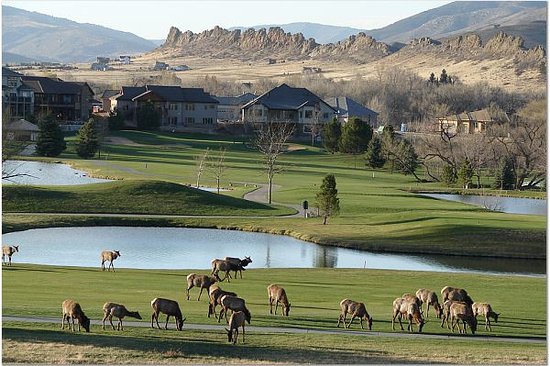This is part 2 of a review of Pacific Institute's latest book, A Twenty-First Century Water Policy. For part 1, click here.
Water quality and freshwater ecosystems are two areas of important consideration in the next century of water policy. They are addressed in Chapters 5 and 6 of the book.
WATER QUALITY
The chapter, written by Lucy Allen, begins with a brief overview of the development of water quality regulation and policy in the 20th century. The good news is, water quality has dramatically improved in most places, thanks in large part toe the Clean Water Act, which gave the federal government the power to regulate water pollution and manage the "biological integrity" of our nation's waters. Today, forty years after the CWA was passed, we still wrestle with water quality problems, but they have shifted in nature. Runoff from urban or agricultural sources, called non-point pollution, is a hairy and seemingly intractable problem now, and the CWA doesn't do very well at addressing how to mitigate this type of input. New contaminants (like volatile organic compounds) are not well understood. Monitoring and assessing the health of rivers has not been adequately pursued by states under the NPDES system.
.JPG) |
Percentage of assessed waters found to be impaired, from
A Twenty-First Century Water Policy (2012) |
The soft path of water policy, advocated by the authors, would capture the power of the CWA and integrate it with existing legislation on drinking water (the Safe Drinking Water Act) in recognition that clean waterways would necessarily facilitate and lower the cost of clean drinking water. In addition, Best Management Practices, which have been shown to be effective in limiting pollution inputs from agricultural and urban sources, could be made mandatory. More research into the effects of VOCs and other less understood additive or synergistic effects of pollutions should inform state and federal water quality standards.
All of these measures are a far cry from re-inventing the wheel, and could simply be applied to legislation and policy frameworks currently in place.
FRESHWATER ECOSYSTEMS
Ecosystem values and services were rarely considered during the 20th century engineering boom. The authors of Chapter 6, Lucy Allen and Juliet Chrstian-Smith, explain what the soft path of aquatic ecosystem policy would look like. The soft path acknowledges ecosystems as legitimate users of water resources and the services they provide. The maintenance or restoration of ecosystems is an explicit policy objective. In our current policy environment, "...adequate ecosystems continue to decline, in large part due to water-use and land-use decisions that do not consider freshwater ecosystems and instream flows." Growing human demand for water, altered size and timing of river basins due to human engineering systems and withdrawals, and increasing extreme weather events contribute to degradation of aquatic ecosystems. As a result, an estimated 39% of fish and other aquatic species are endangered, threatened, vulnerable or extinct and 42% of the US stream length is estimated to be in "poor condition." The Environmental Species Act has been given priority and makes it extremely powerful, but also targeted for litigation and amendments.
The soft path for aquatic ecosystem policy would start with more data, more data, more data. Long term effects on biological indicators from contaminants and physical alterations to waterways needs to be understood in order to be integrated into actionable policy. In addition, the current language of the CWA supports using biological indicators as a standard, which means the focus can shift from chemical indicators as the sole measurement of stream health, a myopic approach. The Secretary of the Interior can coordinate with governors to designate more rivers under the Wild and Scenic Rivers Act, which can provide instream rights and open up funding for better management and monitoring. Market-based solutions, including pricing and water market trades are likely to facilitate the conservation behavior of users. New water infrastructure projects should integrate environmental flows into the decision-making process, and unsafe dams should be removed. The authors state that "These solutions can be applied without compromising state sovereignty over water allocation."
Most of the problems and ideas outlined in these chapters have been state elsewhere by others. But to have it all compiled in a single book helps make the case that these changes are not only smart, they're obvious. The problem will always be that the solutions require more interagency cooperation, more funding, and more research. Implementing those things will be akin to turning the Titanic. It will probably be slow.


 This month, Utah Governor Gary Herbert said he would not sign an agreement that would divvy water under the shared border between Utah and Nevada. This water had been eyed by the thirsty metropolis of Las Vegas a few hours south. The pact was drawn up four years ago in response to a 2004 Congressional order that required the states to reach an agreement before any transfers of water would be permitted in the Snake Valley. The agreement was controversial because of a proposed pipeline enabled by the pact that would send Snake Valley water to Las Vegas. The pipeline spurred protests from farmers, environmentalists, tribes, and ranchers in Utah and parts of Nevada.
This month, Utah Governor Gary Herbert said he would not sign an agreement that would divvy water under the shared border between Utah and Nevada. This water had been eyed by the thirsty metropolis of Las Vegas a few hours south. The pact was drawn up four years ago in response to a 2004 Congressional order that required the states to reach an agreement before any transfers of water would be permitted in the Snake Valley. The agreement was controversial because of a proposed pipeline enabled by the pact that would send Snake Valley water to Las Vegas. The pipeline spurred protests from farmers, environmentalists, tribes, and ranchers in Utah and parts of Nevada.
 Communities all over the Midwest and parts of the Intermountain West are continuing to suffer under extreme and "exceptional" drought. Cities all over the region are urging residents to conserve as much as possible, while crossing their fingers that rain and snow will fall and replenish water storage supplies. Communities like Paris, Arkansas, and many others, which have implemented strict water use restrictions.
Communities all over the Midwest and parts of the Intermountain West are continuing to suffer under extreme and "exceptional" drought. Cities all over the region are urging residents to conserve as much as possible, while crossing their fingers that rain and snow will fall and replenish water storage supplies. Communities like Paris, Arkansas, and many others, which have implemented strict water use restrictions..JPG)
